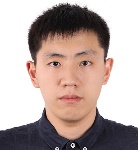2572
Scientific Program

Yuyang Liu
Peking University, China
Biography:
Yuyang Liu has received his Bachelor’s degree of Petroleum Engineering at School of Petroleum Engineering, China University of Petroleum (East) and worked as a visiting student at University of New South Wales. He is now working as PhD candidate at School of Earth and Space Sciences of Peking University and has his expertise in Informational Geology, Petroleum Geology and Petroleum Engineering, in detail, included stress filed simulation, 3D geological modeling and visualizing, self adaption meshing method development, hydraulic fracture simulation and related software development.
Abstract
Stress distribution analysis is crucial in oil and gas field development, especially in the unconventional oil and gas reservoir which affects the distribution of artificial fracture during hydraulic fracturing. Stress simulation based on finite element analysis is widely applied because of its flexibility and accuracy. While due to the incompatibility model grid format between different software, geological modeling process cannot be effectively integrated with finite element analysis. Here, in face of the aforementioned problems, PCP2AFE software, integrated several algorithms, is developed to fulfill the dual-transforming between corner point grid
model built by PETREL and finite element grid model generated by ANSYS. A series of models are imported to testify the validity and efficiency of the software, including both structured and unstructured grids with and without heterogeneous properties. Furthermore, with the development of PCP2AFE software, stress simulation process can directly operate based on geological model without re-modeling in finite element analysis software. Also, the simulation results can be re-converted and linked to geological model based on corner point grid for subsequent analysis and as a result to effectively link PETREL and ANSYS software. Initially, the software is developed to perform models dual-transforming built by PETREL and ANSYS, slight modifications can be operated to make some more extensions in linking more software combinations which based on corner point grid and finite element grid. Meanwhile, models from previous researches are imported to perform the stress field distribution simulation. At last, important conclusions and discussions for subsequent analysis are included.
- Petroleum Geology
- Geophysical Exploration
- Hydraulic Fracturing
- Advanced Drilling Technologies
- Petroleum Refineries
- Computer Applications in Petroleum Engineering
- Computational Modelling
- Petroleum Desulphurization
- Reservoir Engineering & Reservoir Simulation
- Advanced Natural Gas Engineering
- Petrophysics & Petrochemistry
- New frontiers in Petroleum Engineering
- Major Challenges in Petroleum Industry
- Environmental Impacts in Petroleum Engineering
- Petroleum Substitutes
- Petroleum Economics

